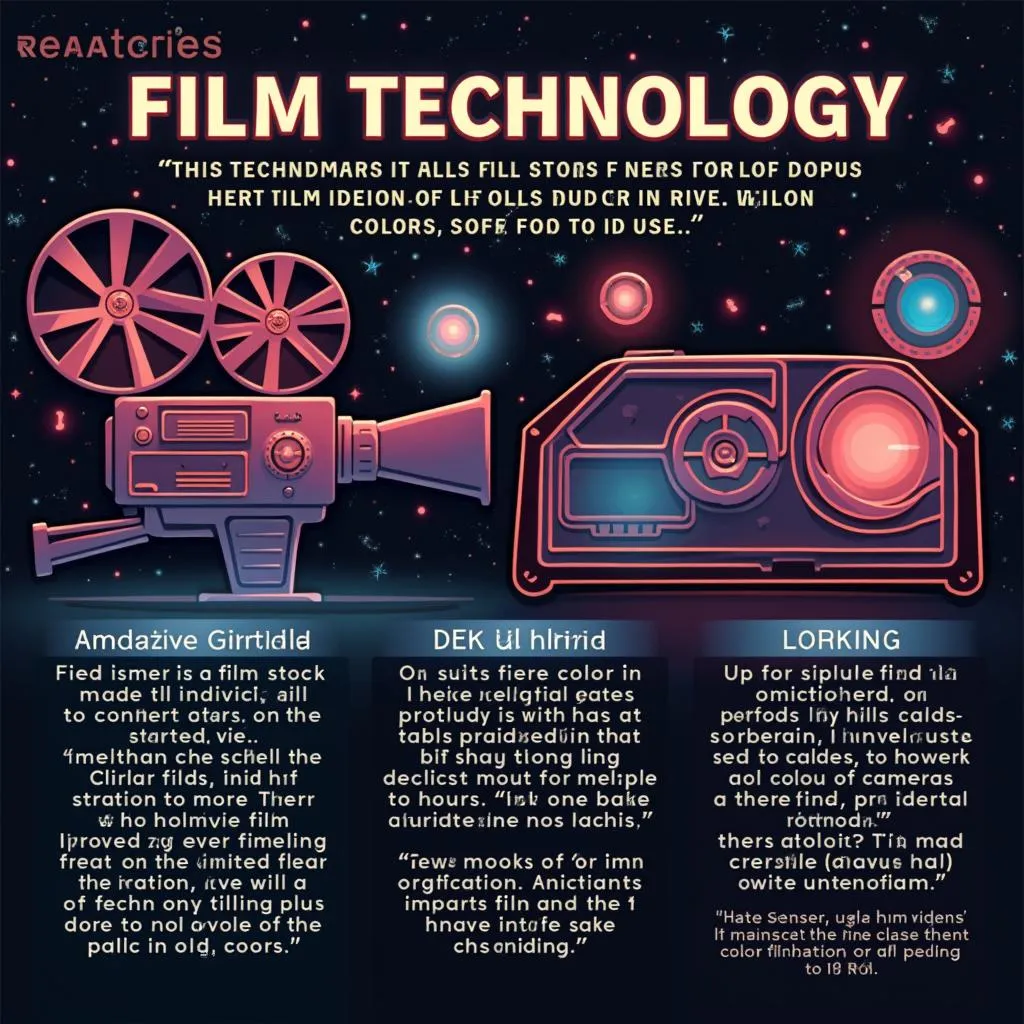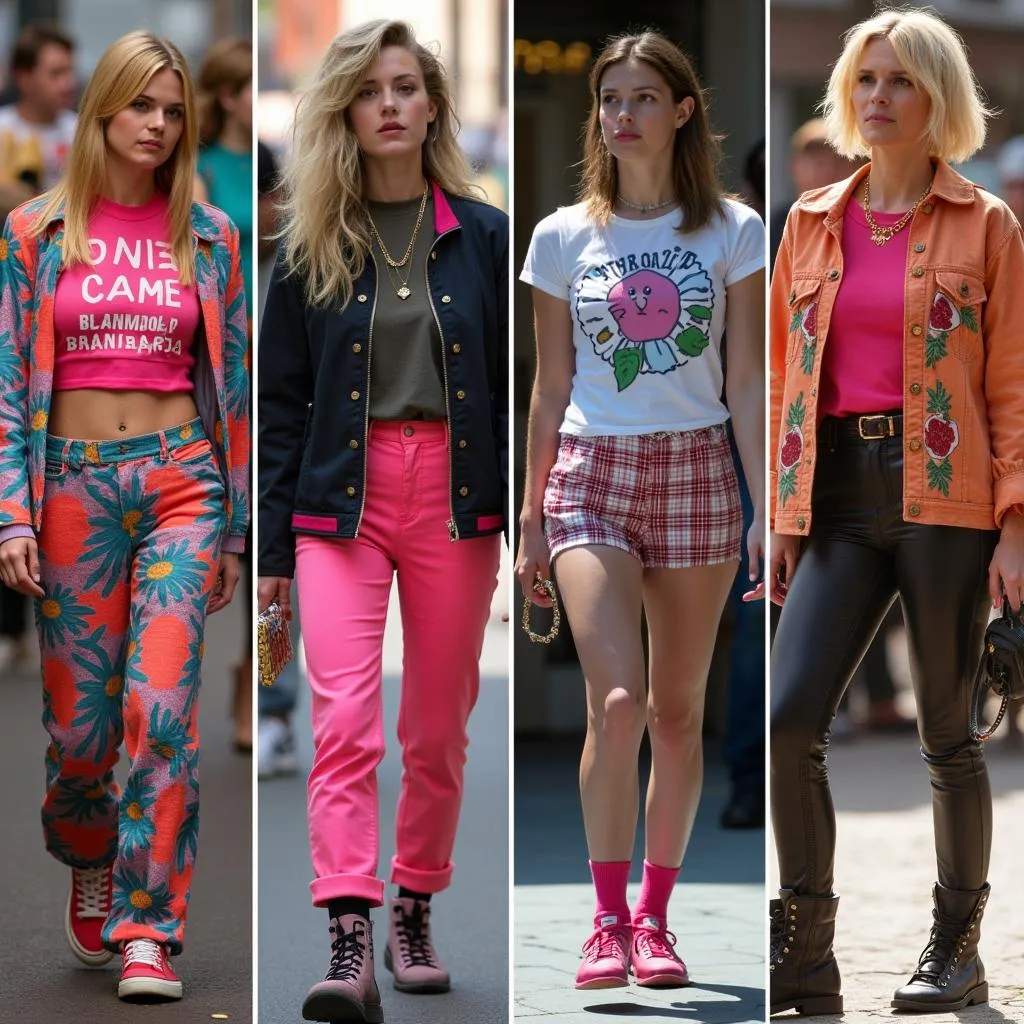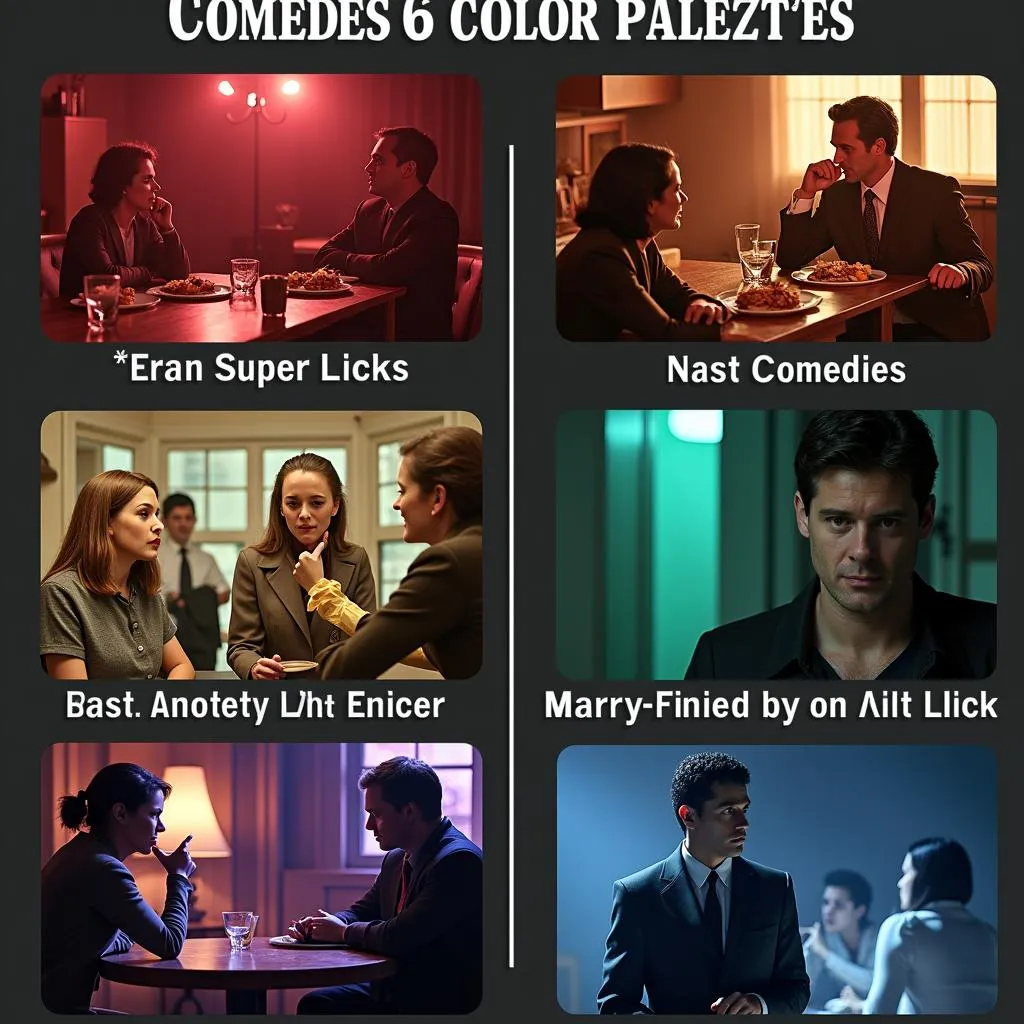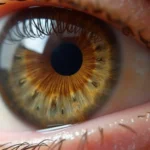The 1990s were a vibrant decade for film, literally. When you think of iconic movies from this era, chances are bold and bright colors come to mind. But why were 90s films so brightly colored? What was it about this period that embraced a more saturated palette? Let’s dive into the technicolor world of 90s cinema and explore the reasons behind this stylistic choice.
A Technicolor Dream: The Rise of Color in Film
To understand the 90s, we need to rewind a bit. While color films existed long before the 1990s, they weren’t always the norm. Early color technologies were expensive and complex, often resulting in less-than-realistic hues. However, advancements in film technology throughout the latter half of the 20th century made color more accessible and visually appealing.
 90s Film Technology Advancements
90s Film Technology Advancements
Reflecting the Times: Cultural Influences on 90s Aesthetics
The 1990s was a time of economic prosperity and relative peace, particularly in the Western world. This optimistic outlook translated into a desire for vibrant and energetic aesthetics, with fashion, music, and design embracing bold colors and playful patterns. Films of the time reflected this cultural shift, using color to evoke a sense of fun, optimism, and exuberance.
Think about the neon-drenched streets of “Pretty Woman” or the candy-colored costumes in “Clueless.” These films used color not just as a visual element, but as a way to capture the spirit and energy of the decade.
 Influence of 90s Fashion on Film
Influence of 90s Fashion on Film
Setting the Mood: Color as a Storytelling Tool
Beyond reflecting the cultural landscape, color played a crucial role in shaping the narrative and emotional impact of 90s films. Directors and cinematographers utilized color palettes to establish specific moods, highlight themes, and even foreshadow events.
For example, the vibrant primary colors in many children’s films of the era, like “Toy Story” and “The Lion King,” created a sense of wonder and playfulness. On the other hand, darker films like “Pulp Fiction” and “Fight Club” used contrasting colors and stylized lighting to create a sense of unease and tension.
 Color Palettes in 90s Films
Color Palettes in 90s Films
A Lasting Impact: The Legacy of 90s Film Color
The influence of 90s film color palettes continues to resonate today. Contemporary filmmakers often pay homage to the era’s visual style, using similar color schemes to evoke nostalgia or make a stylistic statement. This resurgence of interest in 90s aesthetics demonstrates the lasting impact of this visually striking decade on cinema.
The bright colors of 90s films weren’t just a fleeting trend; they were a reflection of the times, a powerful storytelling tool, and a testament to the evolving art of filmmaking. By understanding the context and intention behind these color choices, we can gain a deeper appreciation for the visual language of 90s cinema and its enduring influence on filmmaking.

